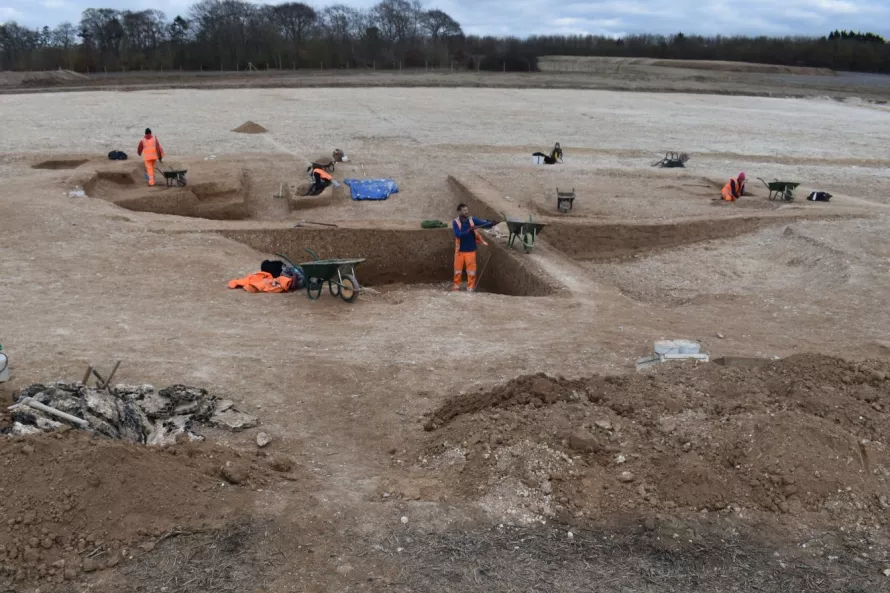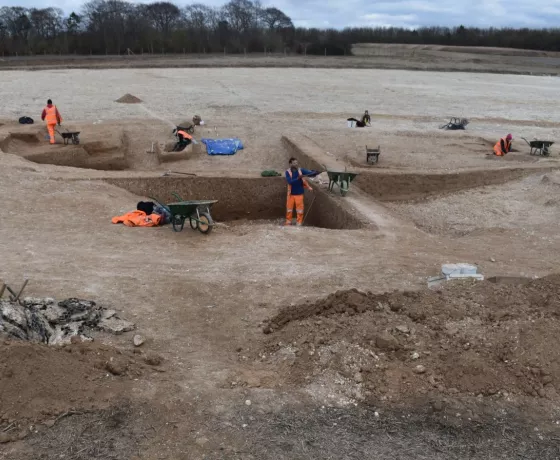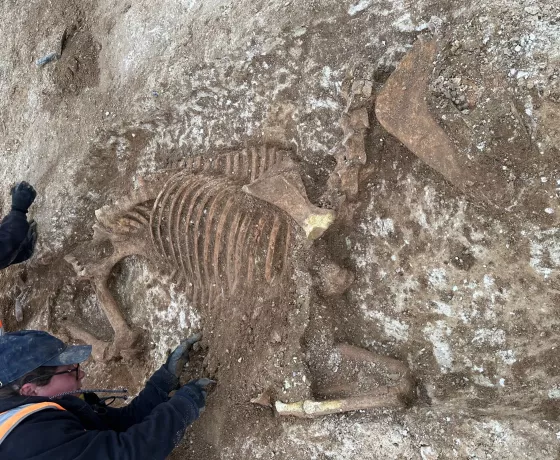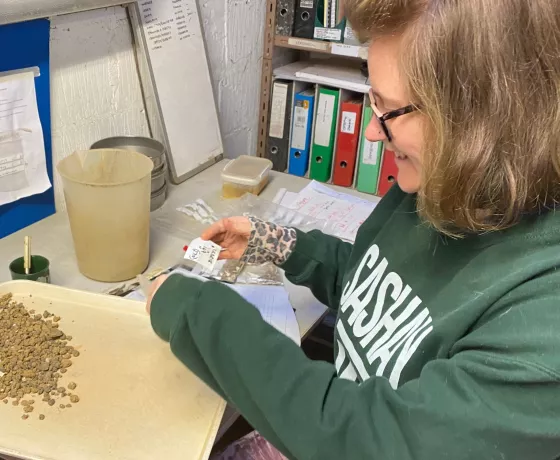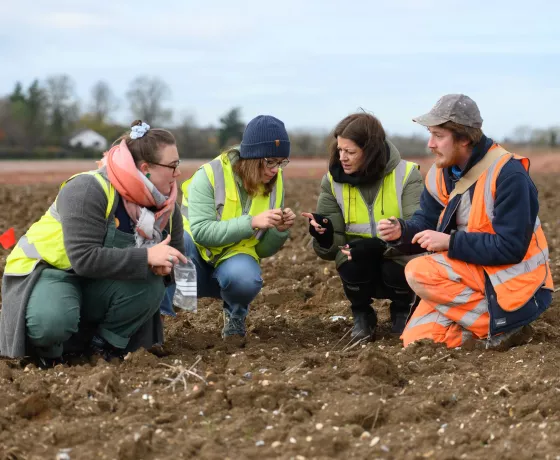At the end of March 2023, waterlogged and weary, but triumphant, the team concluded our excavations at Hinxton with a flurry of interesting finds at the heart of the site.
While the trackway we’ve traced through the landscape continued to give up some interesting finds, including a probable crotal bell used either on cattle or a horse drawn cart, the main focus of attention for the team was a large cluster of pits in Area 4.
The purpose of this cluster of pits kept us guessing right from the off. We started by digging a series of small (1 x 1m) test pits to try and understand why and when these pits appeared and, in one of these, we found the first of five burials. We dug a larger area by hand and discovered that two of the five burials had small Saxon knives similar to those found during previous excavations at the Wellcome Genome Campus. There was no evidence to date the other burials but the largest of these three, a mature male with very heavily built legs, showed evidence of a troubled life with bony growths spread around its body.
In order to better understand how these pits formed and filled with sediment, one of our specialists was brought in to take soil samples, using the latest technology - drain pipes and foil takeaway tins! These will then be taken to the lab to be analysed and will provide a fuller picture of how the landscape developed.
Our next step is to weigh and catalogue all our finds from these excavations, ready to be assessed by specialists, and we're excited to see what more they have to reveal about the prehistory and history of Hinxton over the coming months. One of our favourite finds from this set of pits is this incredibly well preserved Roman coin of Constantine dated to 330-331 A.D and likely coming from the Trier mint in western Germany.
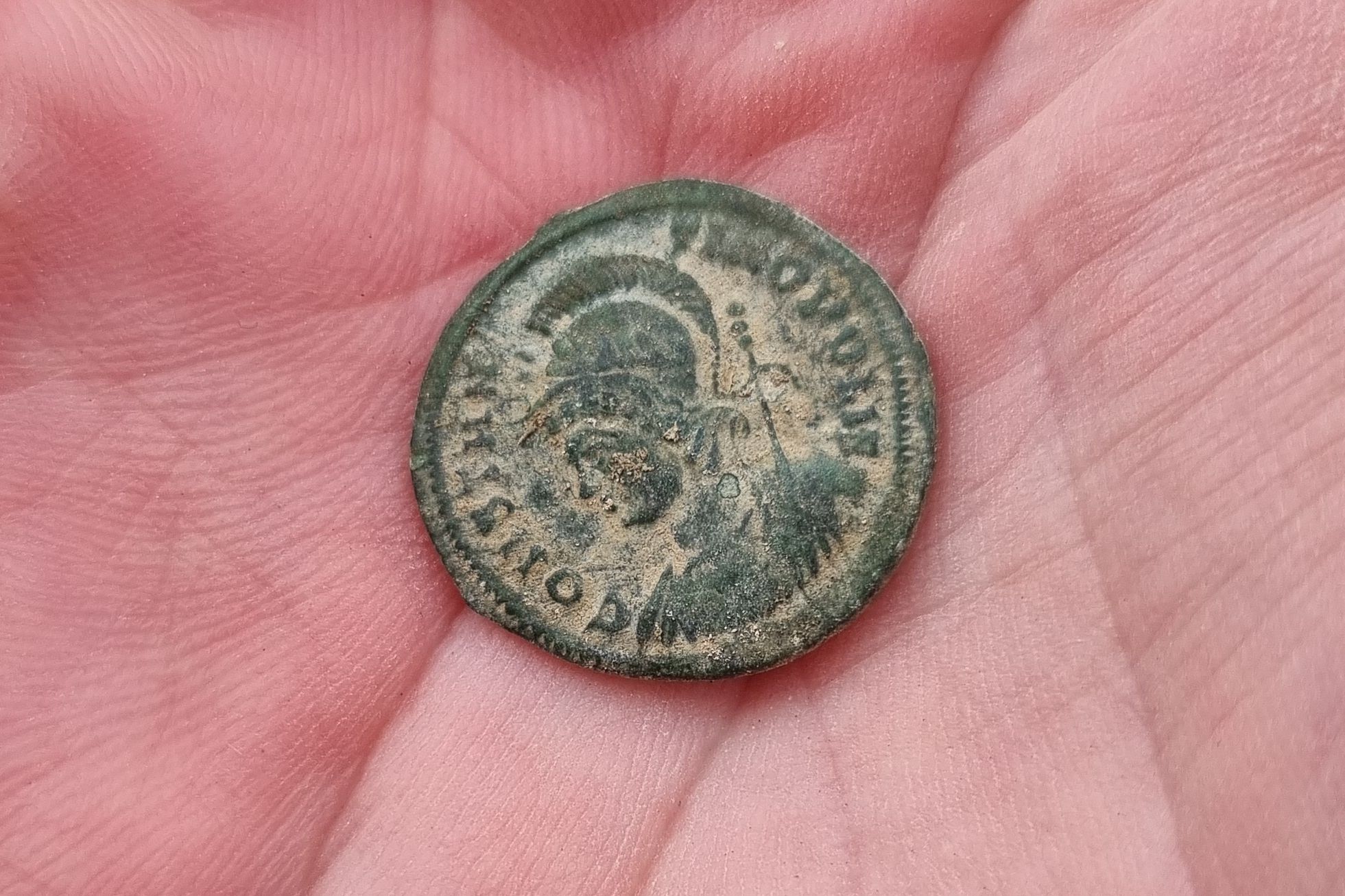
A well preserved Roman coin of Constantine dated to 330-331 A.D.
Other posts in this collection
Read our latest posts about the archaeological investigations at Hinxton.

